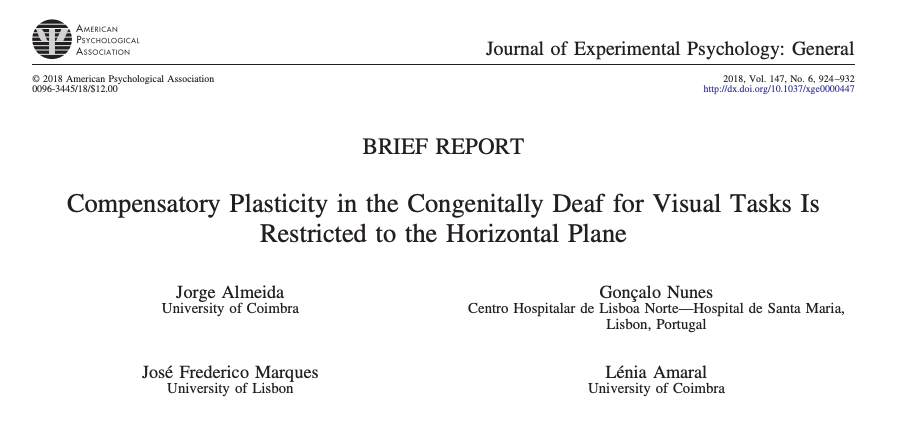Publication information
- Title: Compensatory plasticity in the congenitally deaf for visual tasks is restricted to the horizontal plane.
- Authors: Jorge Almeida, Gonçalo Nunes, José Frederico Marques, Lénia Amaral
- Publication year: 2018
- Journal: Journal of Experimental Psychology: General
- DOI: https://doi.org/10.1037/xge0000447
Abstract:
Congenitally deaf individuals, compared to hearing individuals, typically show differential performance (improvements or impairments) on certain nonauditory tasks. Concomitantly, their auditory cortex is recruited to process information from the spared senses. Are these compensatory behavioral strategies equally observable across the sensory fields of each particular unaffected sense (e.g., across the full visual field for vision-related compensatory plasticity)? There are neural data in human and nonhuman mammals that may be suggestive of there being a differential processing advantage for stimuli presented in the horizontal visual plane than in the vertical visual plane. To test for these visual field asymmetries in compensatory behavioral performance, we used a direction of motion discrimination task and found that deaf participants were better at determining the direction of motion of dot patterns presented in the horizontal plane compared to those presented in the vertical plane and in the center-that is, we show that the neuroplasticity-induced bias toward the horizontal plane is also present in the behavioral advantage that deaf individuals present. These data may suggest that the neuroplastically changed auditory cortex of deaf individuals is functionally responsible for the enhanced processing of information from the spared senses.
